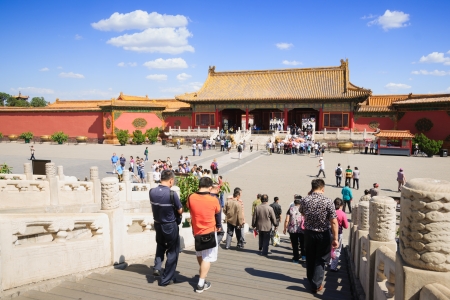Introduction: Context and Relevance
Feng Shui, an ancient Chinese practice rooted in the quest for harmony between humans and their environment, has fascinated people worldwide for centuries. Its origins can be traced back thousands of years to the observation of natural forces and their influence on wellbeing, prosperity, and balance. At its core, Feng Shui seeks to align individuals and communities with the energies present in the landscape, promoting health, fortune, and spiritual fulfilment.
Interestingly, this desire to live in harmony with nature is not unique to China. Across Britain’s own prehistory, evidence abounds of a profound relationship between people and their surroundings. From Stonehenge to Avebury, prehistoric Britons constructed monumental sites attuned to celestial events and the contours of the land. These sacred places reveal a longstanding British fascination with landscape, harmony, and spiritual power embedded within the earth itself.
This article sets out to explore the ancient roots of Feng Shui and draw illuminating parallels with Britain’s prehistoric traditions. By examining how both cultures interpreted their environments—shaping settlements, ritual sites, and daily life—we gain fresh insight into humanity’s enduring quest for balance and meaning within the world around us.
2. Feng Shui: Principles, Practices, and Ancient Roots
Feng Shui, literally meaning “wind” and “water,” is an ancient Chinese practice rooted in the harmonious alignment between humans and their environment. At its core lies the concept of qi, a vital energy believed to flow through landscapes, buildings, and people. The practice seeks to optimise this flow by carefully considering spatial orientation, natural features, and the arrangement of objects within both public and domestic spaces. Archaeological findings from early Chinese settlements provide evidence that even Neolithic communities deliberately aligned homes and burial sites with cardinal directions and natural landforms, reflecting an early understanding of environmental balance.
Key guiding concepts of Feng Shui include:
| Concept | Description |
|---|---|
| Qi (氣) | The dynamic life force or energy present in all things; its unobstructed flow is essential for health and prosperity. |
| Spatial Orientation | The positioning of structures in relation to cardinal points (north, south, east, west) to harness positive energies. |
| Human-Environment Relationship | An understanding that human well-being is deeply influenced by the surrounding landscape and architectural choices. |
This interconnectedness between people and place has shaped not only settlement patterns but also social and spiritual practices throughout Chinese history. Early texts such as the “Book of Burial” (Zangshu) illustrate how mountains, rivers, and wind patterns informed site selection for tombs and cities. Through these principles, Feng Shui demonstrates a sophisticated awareness of environmental stewardship—an idea that resonates across many ancient cultures, including prehistoric Britain.

3. The British Landscape: Ancient Sites and Spiritual Connections
When examining the prehistoric sites scattered across the British Isles, it becomes apparent that ancient Britons shared a profound sensitivity to their environment—one not entirely dissimilar to the spatial awareness at the heart of Feng Shui. Monumental structures such as Stonehenge and Avebury stand as enduring testaments to a worldview where land, sky, and human intention coalesce. These sites were not constructed arbitrarily; rather, their locations and orientations suggest a careful consideration of natural features, celestial events, and energetic flows.
Stonehenge: Alignment with the Cosmos
Stonehenge is perhaps the most iconic of Britain’s ancient monuments. Its layout is famously aligned with the solstices, marking key points in the solar year. This alignment indicates a sophisticated understanding of astronomy, but also reflects an intent to harmonise with cosmic cycles—echoing Feng Shui’s focus on orientation, balance, and auspicious placement. The choice of location, set within a gently rolling landscape and surrounded by burial mounds, hints at a deliberate engagement with both terrestrial and spiritual energies.
Avebury: Circles within the Land
Avebury, another monumental stone circle, encompasses not just stones but an entire village, blurring the boundary between sacred space and everyday life. Its earthworks and avenues appear to channel movement through the site, guiding both people and energy flows in ways reminiscent of Feng Shui’s pathways for qi. The scale and complexity of Avebury demonstrate an understanding of spatial relationships that goes beyond practicality into the realm of ritual landscape engineering.
Ley Lines: Pathways of Power
The concept of ley lines—imaginary alignments connecting ancient sites across the landscape—has captured popular imagination since the early 20th century. While their existence remains debated among scholars, many believe these straight paths reflect an intuitive mapping of energetic routes through the land. In this respect, ley lines are analogous to Feng Shui’s dragon lines or meridians, which guide energy through a space for harmony and vitality.
Echoes Across Time
Through careful observation and construction, ancient Britons shaped their environment in ways that resonate strongly with Eastern practices like Feng Shui. Whether intentionally or instinctively, they recognised subtle qualities within the land—its contours, its connections to sky and water—and responded with structures that continue to inspire awe today. The parallels are not only intriguing but suggest that humanity’s search for harmony with nature is a universal endeavour transcending geography and culture.
4. Parallels Between Feng Shui and British Prehistoric Traditions
When examining the ancient roots of Feng Shui alongside British prehistoric traditions, it becomes apparent that both cultures placed great importance on the relationship between people and their environment. Through a side-by-side exploration, we can highlight striking similarities in how sites were selected, oriented, and imbued with symbolic meaning, as well as the underlying philosophies guiding these practices.
Site Selection
Both Feng Shui practitioners and ancient Britons exhibited discernment in choosing locations for settlements, monuments, and important structures. For instance, Feng Shui emphasises auspicious landscapes—such as sites near flowing water and gently sloping hills—while British prehistoric builders favoured elevated grounds or natural features like rivers and mounds.
| Aspect | Feng Shui | British Prehistory |
|---|---|---|
| Landscape Features | Proximity to water, harmonious hills | Hilltops, riverbanks, barrows |
| Avoidance of Negative Sites | Sharp corners, barren ground | Marshes, exposed plains |
Orientation and Alignment
Orientation is another shared principle. In Feng Shui, buildings are aligned according to compass directions and cosmic influences. Similarly, many British megalithic sites such as Stonehenge are meticulously aligned with celestial events like solstices and equinoxes. This reflects a common desire to harmonise human activity with natural cycles.
| Orientation Principle | Feng Shui | British Prehistory |
|---|---|---|
| Main Axis Alignment | Toward favourable directions (e.g., south) | Toward sunrise/sunset at solstice/equinox |
Symbolism and Environmental Philosophy
Beneath practical considerations lay rich symbolic systems in both traditions. Feng Shui’s Bagua map mirrors universal elements (such as earth, fire, water), while British monuments often encode cosmological beliefs through their form and placement. Both reflect a worldview wherein the environment is seen not merely as a backdrop but as an active participant in human affairs.
Cultural Attitudes Toward Nature
| Cultural Aspect | Feng Shui | British Prehistory |
|---|---|---|
| Nature’s Role | An energy field to be respected and balanced | A sacred force shaping daily life and ritual |
A Shared Legacy of Environmental Awareness
The parallels outlined above suggest that both Chinese and ancient British cultures possessed sophisticated understandings of place-making and environmental stewardship. Their traditions encourage us to see our surroundings not just through a practical lens but with reverence for the subtle energies that shape our experience—a perspective perhaps more relevant now than ever.
5. Cultural Transmission: Separateness or Shared Human Instincts?
The striking similarities between the principles of Feng Shui and the spatial practices evident in British prehistoric sites raise a compelling question: are these parallels the result of cultural transmission, or do they reflect universal human instincts? While there is little evidence to suggest direct contact between ancient China and Britain during the Neolithic or Bronze Age, it is possible that both cultures independently developed comparable approaches in response to the challenges and opportunities presented by their environments.
On one hand, some scholars argue for the concept of convergent evolution in human culture. This theory suggests that faced with similar environmental pressures—such as the need for shelter, access to resources, and spiritual well-being—distinct societies may arrive at analogous solutions. For example, orienting dwellings towards favourable sunlight or water sources can be seen both in early Chinese settlements and in British roundhouses and stone circles.
Alternatively, there is the possibility of indirect cultural transmission through long-distance trade routes or gradual diffusion of ideas over millennia. Artefacts and materials did travel vast distances even in prehistory, though there remains scant direct evidence linking East Asia with the British Isles during these formative periods. Nonetheless, this scenario cannot be entirely dismissed given new archaeological discoveries that continue to reshape our understanding of prehistoric connectivity.
It is also worth considering whether certain responses—such as aligning structures with celestial events or situating them within harmonious landscapes—stem from shared aspects of human cognition and perception. The desire for order, safety, and connection to nature seems to transcend individual cultures, suggesting that some elements of Feng Shui and British site planning may simply reflect innate human tendencies rather than explicit borrowing.
Ultimately, while the question remains open, the current weight of evidence leans toward independent development driven by universal needs and instincts. This perspective not only highlights the ingenuity of our ancestors but also underscores the remarkable consistency in how humans across disparate regions have sought to create spaces that nurture both body and spirit.
6. Legacy and Modern Resonance in Contemporary Britain
The influence of ancient spatial philosophies, such as Feng Shui and prehistoric British practices, continues to echo within modern British society. While the cultural origins differ, both traditions emphasise harmony between humans and their environment—a principle that remains highly relevant today.
Reinterpreting Ancient Wisdom in Landscape Design
In contemporary Britain, the design of gardens and public spaces often draws unconsciously on these age-old concepts. The careful orientation of pathways, water features, and plantings frequently reflects an intuitive understanding of landscape flow—mirroring the way both Feng Shui and early Britons sought to channel natural energies for wellbeing. From urban parks designed to maximise tranquillity to rural estates that blend seamlessly with the contours of the land, echoes of ancient environmental attunement persist.
Spiritual and Architectural Practices
Modern spiritual communities in the UK increasingly look back to prehistoric alignments and site placements for inspiration. For example, sacred sites like Stonehenge or Avebury attract those seeking connection with the past, while also informing architectural projects that prioritise natural light, orientation, and integration with surrounding landscapes. Sustainable architecture in Britain often champions these ideas by designing buildings that harmonise with local topography and climate—an approach not unlike the principles underlying Feng Shui.
A Reflection on Enduring Relevance
The persistence of these ancient principles demonstrates their adaptability to changing times. In an era marked by urbanisation and environmental challenges, the quest for balance between built environments and nature is more pressing than ever. The parallels between Feng Shui and British prehistory serve as a reminder that our ancestors grappled with similar questions about place, meaning, and harmony.
Looking Forward
As Britain continues to evolve, there is value in recognising and re-engaging with these deep-rooted traditions. Whether through thoughtful landscape planning or mindful building design, the lessons from both East and West offer practical guidance for creating spaces that nurture wellbeing. Ultimately, these enduring philosophies encourage us all to consider how we might live more harmoniously within our unique environments—drawing on the wisdom of the past to shape a more balanced future.


